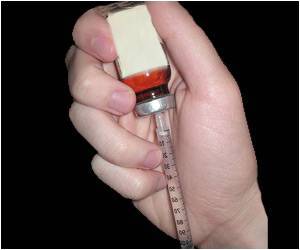An international team of researchers racing against the clock have figured out how tainted batches of the blood thinner heparin slipped past safety screens to kill dozens of patients
Two new studies by international researchers have demonstrated how tainted batches of heparin were able to escape being caught out and how exactly this tainted drug killed many people in the US and Germany.
The scientists, led by MIT professor Ram Sasisekharan, identified the contaminant, and have shown how it triggered deadly allergic reactions that left at least 81 dead in the United States alone."There was an absolute imperative to solve this health crisis as quickly as possible," Sasisekharan, who coordinated both studies, told AFP by email.
Based on their findings, the US Food and Drug Administration (FDA) identified the toxic substance earlier this week as a synthetic compound called oversulfated chondroitin sulfate (OSCS).
"The FDA has already moved to put screening methods in place to detect contaminated heparin," said Sasisekharan.
Heparin, a blood thinner used by millions of patients during kidney dialysis and heart surgery to prevent blood clots, is normally produced from pig intestines.
FDA officials have said the contaminated batches came from factories in China that make the drug for US-based Baxter International, which recalled its heparin in February after dozens of deaths in the United States were reported, dating back to November.
Advertisement
A Chinese official cited by the New York Times on Tuesday disputed the assertion that the blood thinner has caused deaths, but conceded that heparin produced in China contained a contaminant.
"Traditional safety screens for heparin only test for contaminants such as protein, lipids or DNA," explained Sasisekharan. But OSCS, like the drug itself, consists of long, complex chains of repeating sugar molecules, making it virtually impossible to spot.
Using new technology developed for analysing complex sugars, the researchers developed a way to screen for the toxin.
The second study, published in the New England Journal of Medicine, shows how the contaminant activates two inflammatory pathways in the body.
One triggers blood clotting and dilation of the blood vessels, leading to a dangerous drop in blood pressure. The other produces toxins that cause severe, and potentially deadly, allergic reactions.
Other symptoms reported include painful swelling of the skin and mucus membranes, shortness of breath, and abdominal pain.
"Our findings suggest that a simple bioassay" -- a chemical test -- "could help protect the global supply chain of heparin," Sasisekharan said.
Neither of the studies, however, address the question of exactly where or at what stage of production the contaminant was introduced, he added.
More than one million multi-dose vials of heparin are sold per month in the United States, according to the FDA. Half of them are manufactured by Baxter.
About 350 adverse events associated with Baxter products have been reported since the beginning of the year, compared to less than 100 for all of 2007.
Most incidents occurred at blood dialysis centres with patients taking a high dose administered over a short period of time, the FDA reported.
Source-AFP
RAS/L











